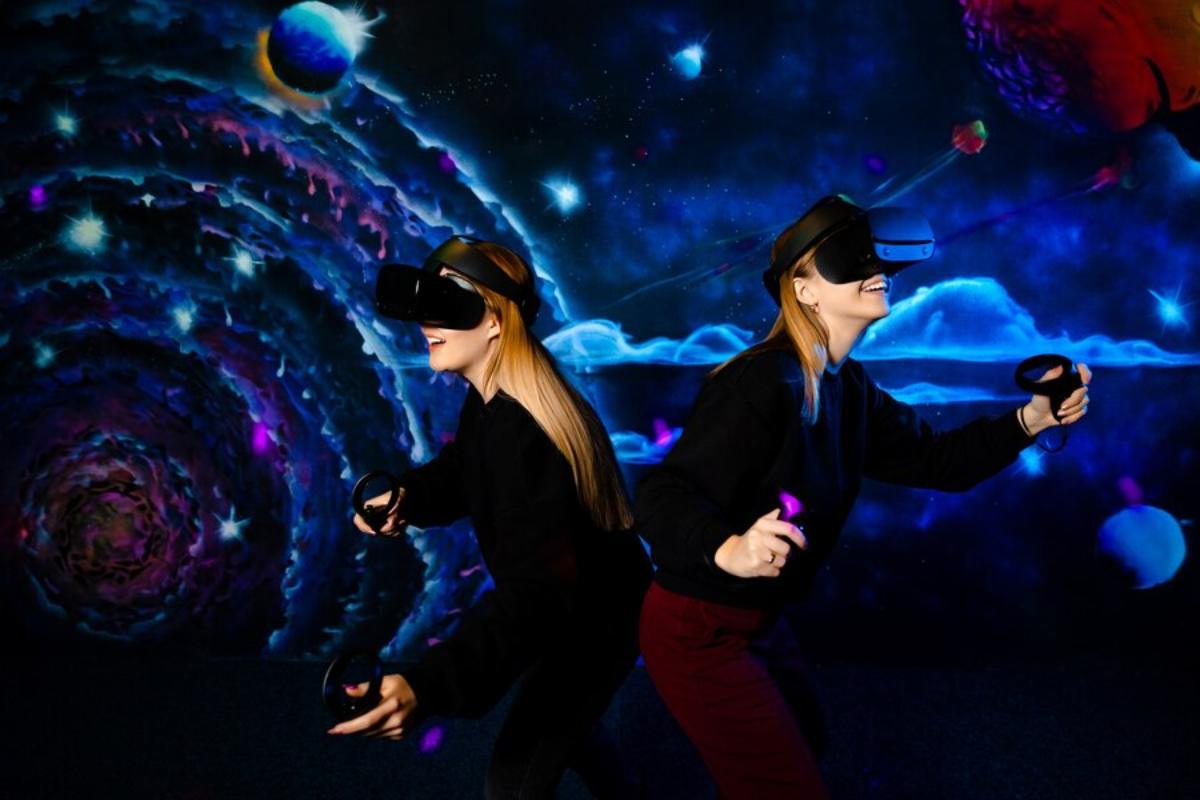The concept of the metaverse has been gaining traction, especially among gamers. The metaverse refers to a digital universe where people can interact, play, and even work in a shared virtual space. But what does it really mean for gamers?
What is the Metaverse?
The metaverse is a virtual world that combines various technologies, such as virtual reality (VR), augmented reality (AR), and blockchain, to create a seamless online environment.
Key Features of the Metaverse:
- Persistent Worlds: These digital spaces exist 24/7, even when you log off.
- Interconnected Experiences: Games, social activities, and digital economies are linked.
- Real-Time Interaction: Players can communicate and interact in real time.
Example:
Games like Fortnite and Roblox are early versions of what the metaverse could become, offering persistent worlds where players can socialize, create, and compete.
Tips:
- Explore existing platforms to get a sense of the metaverse.
- Stay updated with new technologies shaping this space.
How the Metaverse Changes Gaming
The metaverse is reshaping how games are played and experienced. It’s not just about individual games anymore; it’s about interconnected experiences.
Key Changes:
- Social Interaction:
- Gaming has become more collaborative, with voice and video communication.
- Player-Created Content:
- Users can design their worlds, characters, and missions.
- Virtual Economies:
- Players can earn and trade digital assets that hold real-world value.
Example:
In Decentraland, players can buy virtual land, build on it, and even rent it out to other users.
Tips:
- Learn about virtual currencies used in gaming.
- Experiment with games that emphasize user-generated content.
Virtual Reality (VR) in the Metaverse
VR plays a major role in creating immersive gaming experiences.
Benefits of VR in Gaming:
- Immersion: Feel like you’re actually inside the game.
- Realistic Interactions: Use hand gestures and voice commands.
- Physical Engagement: Move your body to interact with the virtual world.
Example:
Games like Beat Saber and Half-Life: Alyx uses VR to deliver unique, immersive gameplay.
Tips:
- Invest in a VR headset if you’re interested in metaverse gaming.
- Look for games that support VR to enhance your experience.
Augmented Reality (AR) and Gaming
AR overlays digital content onto the real world, blending reality with the virtual.
Key AR Features:
- Location-Based Games: Play games based on your real-world location.
- Interactive Gameplay: Use your phone or AR glasses to interact with the environment.
Example:
Pokémon GO is a popular AR game where players catch virtual creatures in real-world locations.
Tips:
- Explore AR-compatible games for a fresh gaming experience.
- Use devices with good cameras and sensors for better AR gameplay.
Blockchain and Gaming
Blockchain technology introduces new possibilities in the metaverse, especially for gamers.
How Blockchain Impacts Gaming:
- Ownership: Players truly own in-game assets like skins, weapons, or virtual land.
- Play-to-earn (P2E): Earn rewards that can be traded for real money.
- Transparency: Secure transactions ensure fair play.
Example:
Games like Axie Infinity use blockchain to let players earn cryptocurrency while playing.
Tips:
- Learn about cryptocurrency wallets to store your digital assets.
- Research games that offer blockchain features before investing time or money.
Social Aspects of Gaming in the Metaverse
Gaming in the metaverse goes beyond competition; it’s also about community and connection.
Social Features:
- Virtual Events: Attend concerts, movie screenings, and parties in virtual worlds.
- Collaborative Gameplay: Work with others to achieve goals.
- Digital Identity: Customize your avatar to reflect your personality.
Example:
Fortnite has hosted virtual concerts featuring artists like Travis Scott and Ariana Grande.
Tips:
- Participate in community events to meet like-minded players.
- Use safe practices when sharing personal information online.
Accessibility in the Metaverse
The metaverse aims to be inclusive, making gaming accessible to more people.
Accessibility Features:
- Customizable Controls: Adjust settings to suit your needs.
- Language Support: Play games in multiple languages.
- Hardware Compatibility: Options for both high-end and budget devices.
Example:
Platforms like Roblox offer tools for players of all skill levels to create and play games.
Tips:
- Look for games with accessibility settings that match your requirements.
- Experiment with different devices to find the best experience.
Challenges of the Metaverse for Gamers
While the metaverse offers exciting opportunities, it also comes with challenges.
Common Challenges:
- High Costs: VR headsets, powerful PCs, and blockchain transactions can be expensive.
- Learning Curve: New technologies require time to understand.
- Privacy Concerns: Data security and online safety are critical.
Tips:
- Start small by exploring free or low-cost platforms.
- Use strong passwords and enable two-factor authentication.
Future of Gaming in the Metaverse
The metaverse is still evolving, but its potential for gaming is enormous.
Predictions:
- Cross-Platform Gaming: Seamless play across devices.
- AI Integration: Smarter NPCs and dynamic game environments.
- Real-World Integration: Use real-world objects in virtual gameplay.
Example:
Imagine a game where your real-world fitness tracker affects your character’s stamina in the game.
Tips:
- Stay informed about technological advancements.
- Join forums and communities discussing metaverse developments.
Conclusion
The metaverse is transforming gaming by creating interconnected, immersive, and social experiences. While there are challenges, the opportunities are vast. By staying informed and experimenting with new platforms and technologies, gamers can make the most of what the metaverse has to offer. The future of gaming is here—and it’s exciting!

